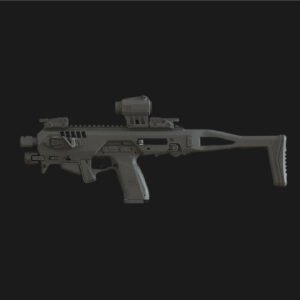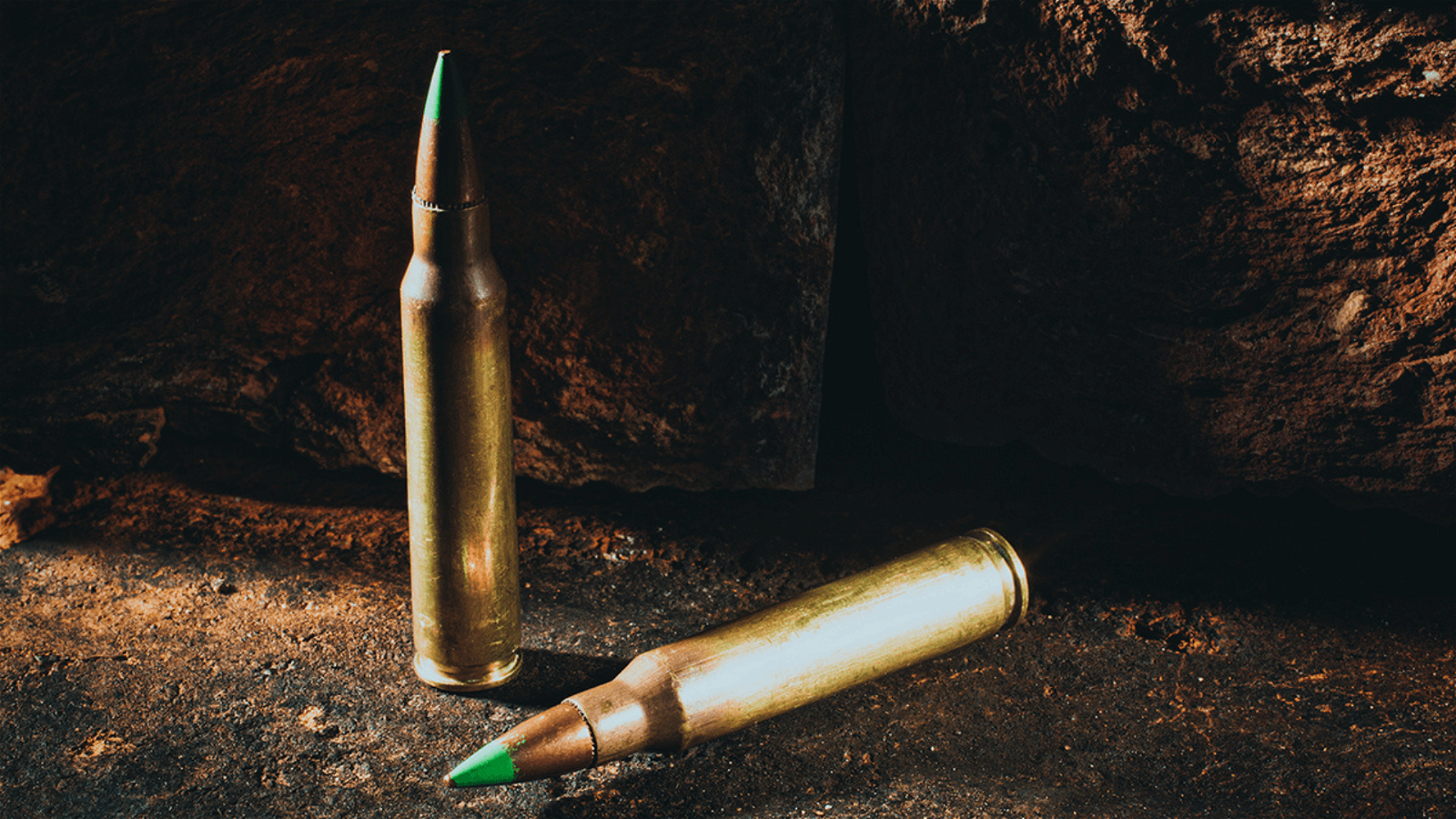If you’ve recently purchased a 5.56x45mm NATO rifle (or are about to), and if you’re relatively new to the firearms scene overall, you’re probably wondering about what the best type of 5.56 ammo to get for your rifle is.
The 5.56 is one of the most common rifle calibers sold today because it’s used with several of the most popular rifles in use today as well, such as the AR-15, Ruger Mini 14, and SIG Sauer MCX, among others.
But with the 5.56s commonality has come a great diversity in ammo choices, and it can be difficult to know what the best type of 5.56 ammo to buy is.
Thankfully, we’re here to help you out.
In this article, we’ll cover the differences between 5.56 and the closely related .223 Remington before diving into the primary types of 5.56 ammunition that is available for your rifle.
5.56 vs. .223

The 5.56x45mm NATO is very closely related to the .223 Remington cartridge, and while the two rounds are often named interchangeably, they are actually a little different.
It’s vitally important that you are aware of the differences between these two calibers.
The .223 was developed by Remington in the early 1960s for the U.S military, which was seeking a small .22 caliber, high-velocity caliber that would be used to replace the larger and venerable 7.62x51mm caliber that was then standard issue.
The new M16 rifles were chambered for the new .223 cartridge, giving American infantrymen serving in Vietnam the advantage of a rifle that was easier to fire and had higher capacity than the 7.62x51mm M14s.
But that wasn’t the end of the .223.
In the late 1970s, the caliber was developed further by Belgian arms manufacturer FN Herstal to accommodate the U.S. military’s request to give the .223 greater penetration at longer ranges. FN improved the round by loading it to a higher pressure and making it slightly longer in between the barrel rifling and the mouth of the shell casing (0.125” to be precise).
In 1980, the 5.56 was officially born.
It’s important to note the differences between the two calibers, because a rifle chambered for .223 Remington will NOT chamber and fire 5.56. This is because a .223-chambered rifle cannot handle the increased pressures of the slightly longer 5.56.
However, a rifle chambered for 5.56 will chamber and fire .223 Remington (therefore, a 5.56-chambered weapon is more versatile).
The Different Types of 5.56 Ammo
The two most common designations of 5.56 ammunition you will encounter are:
M193

The M193 is the original 5.56 round. It’s a standard 55-grain bullet with a full metal jacket (FMJ) and a sealed case mouth and primer to ensure moisture stays out. It’s also the most similar 5.56 round to the original .223 Remington.
Note that you will sometimes see M193 listed as XM193. The ‘M’ simply means that the round was built to the standards set by the United States military, while the ‘X’ means that the same ammunition was also produced for the civilian market.
Confusing things is that sometimes ammo listed as ‘M193’ will be sold on the civilian market anyway. For all intents and purposes, M193 and XM193 ammunition is identical and should perform the same way.
Specs:
- Muzzle Velocity: 3,200+ FPS
- Muzzle Energy: 1,300 ft./lbs
- Grains: 55
M855

Also known as SS109 (its official NATO designation) or sometimes as ‘green tip’ or ‘penetrator’ ammo, the M855 was created by FN when they developed the 5.56 in the first place.
The M855’s distinguishing feature is the bullet’s ‘hybrid’ core that consists of both soft and steel materials , in contrast to the M193’s consistent material inside of the metal jacket. This is designed to pierce armor at long ranges.
The M855 earned its ‘green tip’ moniker from the distinctive green painted, steel core penetrator tip at the end of some M855 rounds. Most M855 ammunition has this green tip, but not all of it does.
The M855 is capable of penetrating 0.12 inches of steel at just under 2,000 feet, which is an incredible feat for such a lightweight cartridge.
However, the M855 is also less effective at softer targets than other types of 5.56 ammunition. This is because the steel tip is more likely to simply pass through targets rather than cause greater damage like the M193 will.
As with M193, M855 is sometimes designated as ‘XM855’ but there are no meaningful differences between the two.
Specs:
- Muzzle Velocity: 3,150+ FPS
- Muzzle Energy: 1,370 ft./lbs
- Grains: 62
Additional Types of 5.56 Rounds

Additional designations for 5.56 rounds that you will see floating around are:
- M196: Also known as ‘Tracer’ rounds, this refers to 5.56 ammunition with a chemical compound that is glued onto the back of the bullet and leaves an orange or red trail when the round is fired.
- M199: This refers to dummy 5.56 ammunition that is used for safe dry-fire and training practice. It’s instantly distinguishable due to the indents on the side of the casing and lack of a primer.
- M200: this refers to blank 5.56 ammunition that has a functional casing with a crimped end with no bullet. A rifle loaded with M200 ammunition will ‘fire’ and cycle just as a live round would, but without any projectile coming out of the end of the barrel.
Conclusion
When you go shopping for 5.56 ammunition, pay close attention to the above designations.
M193 is the best choice if you want a general purpose 5.56 round that is ideal at longer distances. M855 is the better choice if you want a 5.56 round that offers greater penetration of steel targets or body armor at longer ranges but at the sacrifice of slightly less damage and accuracy.
Feel free to leave a comment below if you have further questions!





